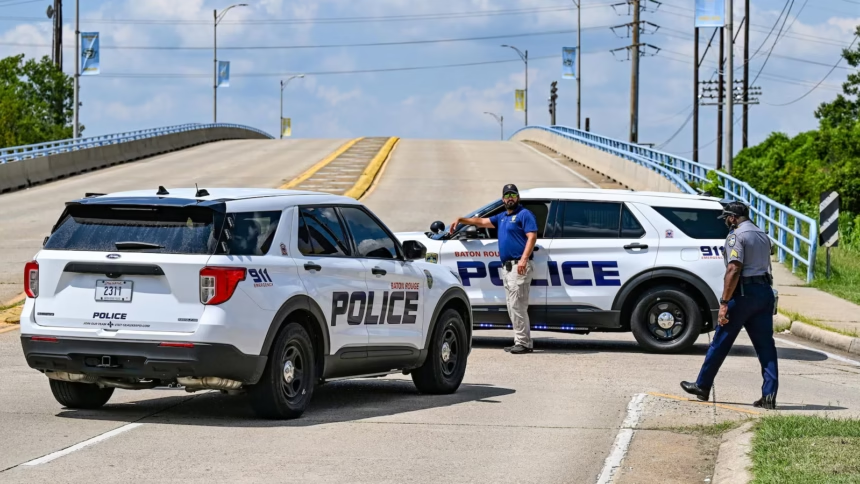Colleges across the country are facing a troubling trend: fake calls claiming there’s an active shooter on campus. Following the Charlie Kirk shooting incident earlier this year, these false reports have increased. Just recently, almost 50 of these calls triggered panic, required many police officers to respond, and caused distress to students and staff.
This swatting involves anonymous individuals falsely reporting a shooter or attack. Though the calls aren’t real, the consequences are: lockdowns, emotional trauma, wasted money, and constant worry that the next call might be real. These fake calls connect to fears about real violence. The Charlie Kirk shooting made people more afraid of public gun violence. Colleges, being concerned about school shootings, became easy targets for making people feel afraid afterward.
When the hoax calls started, many students remembered the Kirk incident and feared that more real attacks were starting. That made the hoaxes even more effective at causing panic. Now that active shooter drills are common, even a small suggestion of danger makes everyone panic. The calls are similar at each school. Someone calls anonymously, often using technology to hide their identity, to report a gunman in a building, dorm, or classroom. Police must consider these calls as real, and they send SWAT teams, lock down buildings, and warn everyone.
The next minutes are frightening for everyone on campus. Students hide, lock doors, and text their families while parents get alerts and try to contact their kids. It can take hours for police to say it was fake. These fake calls cause a lot of damage. Each one costs thousands in police overtime and disrupts schedules. The mental damage is bigger. Students talk about the terror of waiting in locked rooms, unsure if gunfire is coming. Teachers try to calm scared students, some of whom have experienced real violence. Counselors report more anxiety, depression, and requests for help.
There are also accident risks. People could get hurt while trying to escape or police might misinterpret someone’s actions and start a fight. Experts think colleges are targeted because they’re well-known, easy to access, and stir emotions. Colleges represent learning, community, and safety. A campus threat makes headlines, which is good for hoaxers who seek chaos.
Campuses are big and hard to protect. The large student population, entrances, and open spaces make it hard for police to respond to possible threats. This makes a false alarm a bigger issue. Finding the people behind these calls is hard. Many seem to use internet services to hide the caller’s identity, and some use fake voices, making it hard to identify the caller. Federal authorities are examining whether these calls are planned, perhaps by groups trying to scare people. They worry that some hoaxers may be located in other countries and using technology to cause trouble without getting caught.
Police are in a difficult position. If they dismiss a call as fake and it turns out to be real, the results could be terrible. If they treat every call as real, they could waste resources and spread panic for no reason. This uncertainty leaves police unsure about how to react. Most choose to treat every call as real until they are sure it’s fake. This is understandable, but it means hoaxers can get what they want just by making a call.
Students are really uneasy about these hoaxes. Besides academic and social pressures, they’re now filled with fear. Some say they’re always looking over their shoulders, avoid crowded events, or are thinking about transferring. One student said during a hoax at her school, “We were in a dark classroom for two hours. Any noise in the hall made me think someone was coming with a gun. When we found out it was fake, I cried from relief, but also from anger. Whoever did this doesn’t realize the damage they cause.”
Teachers and staff feel the same frustration, often feeling helpless as they guide students through lockdowns. Colleges are giving teachers training on what to do during emergencies because classrooms are now the front lines. The media also has a role. Reporting raises awareness and pushes for action, but it might inspire other hoaxers seeking attention. Scary headlines could worsen the panic.
Some experts want the media to be careful to not share details on how the hoaxes are done while still informing the public. These hoaxes make people feel mentally unwell. Students who already worry about shootings are now more scared, even if it’s not real. Counseling centers have more people asking for help, which means some have waiting lists.
Parents are also stressed. They worry about their kids’ safety and constantly check their phones for updates. For families paying for college, more worry is not great. Colleges are taking action. Some are investing in tech like cameras, gunshot detectors, and alert apps where students can report suspicious things. Others do more safety drills so everyone knows what to do.
Colleges are also attempting to support mental health by funding more counseling, creating support groups, and giving students places for them to talk about their worries. They say they can’t stop the calls, but they can control how they and their people react to them.
Given the scale, politicians are requesting stricter federal laws. Some want the Justice Department and FBI to focus on these cases and severely punish hoaxers. Others want laws to track and prosecute them, regardless of location. Some are worried that strong measures could hurt privacy or lead to more monitoring of students. The aim is to stop hoaxers without creating new issues. Beyond the main problem, these hoaxes cause questions about how America deals with violence, fear, and security. The calls feed off existing fears caused by mass shootings, revealing how unsafe campuses feel.
Some say that until the country deals with access to guns, cultural issues, and mental health, the fear will stay, and hoaxers will take advantage of it. The problem may be bigger than the calls. While investigations go on, colleges and communities are working to adjust. Some campuses are changing their security to quickly identify what’s real and what’s fake. Others are trying to teach students that despite the fear, their communities are strong.
Essentially, this hoax call problem shows that keeping US campuses safe means handling the fear that shootings cause. For students, it’s hard to know what’s real, and they’re living with doubt. Almost 50 hoax calls in weeks have shaken colleges, showing problems with security and the country’s mental state. No one has been shot, but the emotional damage is obvious. This crisis requires stopping pranksters, but it also requies fixing a society where fear of gun violence is so strong that a phone call can close a campus.
One student said after her third lockdown in a month: “Even if it’s fake, you never really know. That’s the worst part you don’t know if this is the time it’s real.” The hoaxes are false alarms, but the fears are real. Unless the hoaxers and the issue of gun violence are dealt with, campuses will be stuck between safety and doubt.









